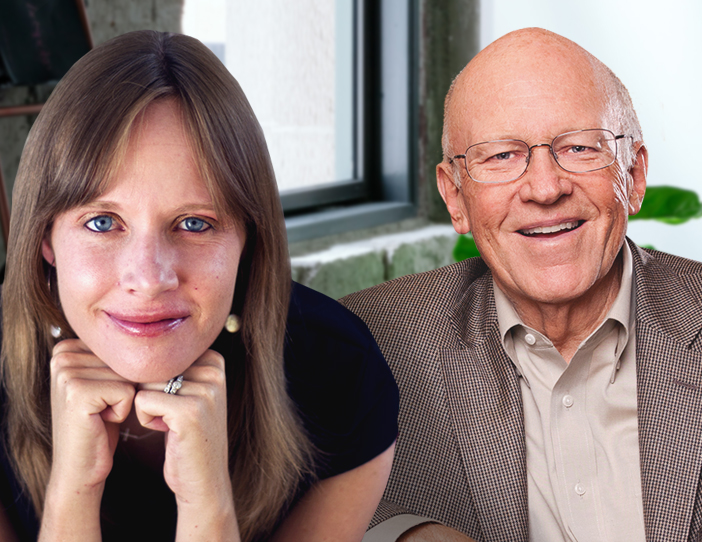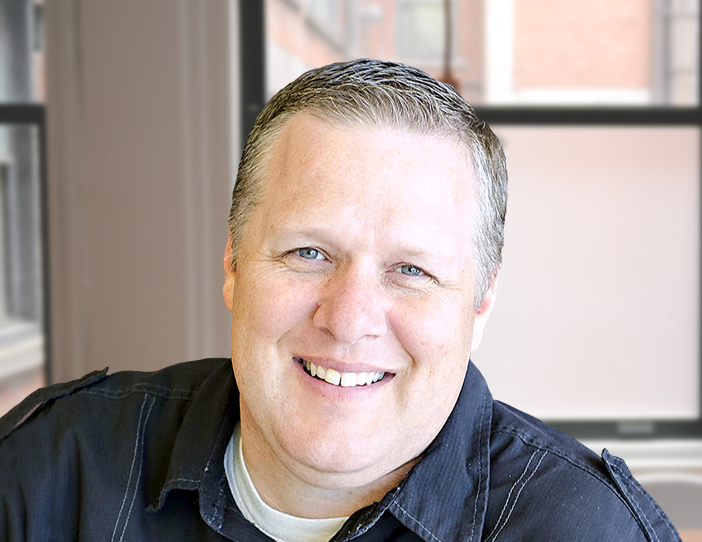
Episode Description
Unless you’ve been living in a cave for the last fifteen years, you recognize Seth Godin as a preeminent influencer in the marketing world.
And in an industry that can be so noisy, cheesy, and in-your-face, Seth’s thinking stands out. It’s deep and it’s well-reasoned. And it’s humanistic, affirming at its core that marketing is ultimately about people and the relationships we build with them.
So I’m honored to have him as my guest on this week’s episode of the Building a StoryBrand podcast.
One of the many things I admire about Seth is his ability to understand what’s happening in the world around us and then clearly articulate what it means for us as marketers. You see it in everything he communicates, and this conversation is no exception.
We cover a lot of ground, including:
- How to ship your projects quickly without sacrificing quality
- Why the old models of marketing are failing and what it takes to succeed today
- The psychology behind why people buy (most of us miss it)
- The perils of not understanding the world we’re marketing in
- Why now is an ideal time to be a creative person
At every point in the conversation, Seth challenges us to think differently about marketing. And when we do, we’ll find a massive opportunity to set our businesses apart and make more meaningful connections with our customers.
I’ve pulled out five big paradigm shifts from our conversation and summarized them here for you.
But there’s more wisdom in the podcast than I can possibly recap for you here — I’d just be posting a transcript, basically — so make sure you listen to the entire episode this week.
Why We Really Buy — and What it Means for Anyone in Marketing
Marketing can be a technical job, right? Some days can feel like an endless parade of spreadsheets, analytics, and checklists.
And of course, those things are part of any good strategy. But when we focus too much on them, we over-systematize our marketing. As a result, we lose sight of the deeply human reasons that motivate every buying decision.
“We don’t actually buy the cheapest of anything or, by most measures, the best of anything,” Seth explains. “When we choose something, when we recommend it, when we miss it [if] it’s not there — we’re buying it as a human, not as a computer. What we want more than anything is to buy it from someone we trust who wants what we want.”
“What we want more than anything is to buy it from someone we trust who wants what we want.”
That’s a massive opportunity for marketers, right? But Seth says most of us fail to grasp this. Why? “They lack the humility to realize that they have to do more than just show up with pretty good stuff at a pretty good price,” Seth says. “They have to be a ringleader, an impresario, a maker of magic.”
And if the marketing aspect of your job feels uninspiring, you may have lost sight of this key truth. As Seth so beautifully put it: “It turns out, once you figure that out it’s one of the great jobs. It’s one of the great opportunities. But you can’t blink. You have to lean into it and do it on purpose.”
Why Formulas Matter (Plus Why They Don’t)
There’s a book I love called The Seven Basic Plots by Christopher Booker. In it, this scholar contends that you can distill any story in history down to one of only seven basic plots. Every story essentially adheres to a formula. Formulas use a structure to give you a predictable result.
Any creative field comes with formulas. They’re the tried-and-true templates that have been proven over the years to connect with an audience. Every screenwriter, poet, artist, or public speaker worth their salt has studied the “formulas” for their respective fields. Why? Because they work.
As marketers and entrepreneurs, we have formulas, too — the proven templates that work for business plans, web pages, org charts, sales copy, email campaigns, and more.
Formulas will produce good work. They can also get you into trouble.
Seth explains: “The problem with the formulas — let’s just pick an obvious category like screenwriting — is there are 10,000 hacks who are turning out formula-driven screenplays every day in Hollywood. Almost none of them turn into great movies. The great movies are the ones that broke part of the formula, right? It’s when you break one of the principles that you’re actually doing great work.”
If you don’t master the formulas, you can’t play around with them. But if you follow them to the letter, you’ll never create stand-out marketing materials that set your brand apart.
As a marketer, you’ve got to know the formulas. And when it comes time to do the work, then you’ve got to get creative with them. Break them, reinterpret them, forget about them. Let them exist in your subconscious, but obey the artistic flow of whatever it is that you’re trying to create. Then come back to it, using the formulas again as a guide for changes that you might make.
If you don’t master the formulas, you can’t play around with them. But if you follow them to the letter, you’ll never create stand-out marketing materials that set your brand apart.
Do Your Best Work and then Engage Your Audience
As an author, I’m all too aware of how hard it can be to stop working on a book and ship it to my publisher. It’s tempting to stay tucked away in a cabin somewhere, tweaking sentences and fine-tuning my words.
You may have the same kind of perfectionist tendencies about your products, your website, or your music.
But Seth argues that this kind of cycle isn’t great for us as creators, saying “the only way to know if your work is resonating is to engage with the audience.”
Seth gives the example of basketballs. LeBron James is shooting a much more sophisticated, engineered ball than what teams were playing with 80 years ago. The basketball has undergone countless innovations over the years. But what if basketball makers had just been secretly working on it in the lab for the last 80 years? We wouldn’t have a sport.
Instead, you “merely ship it,” as Seth succinctly puts it. He continues: “Today is different than 50 years ago. 50 years ago, you had to reach the entire audience before you got any feedback. Now, you can have 100 people read your book and find out what happens. Now, you can put something on YouTube for a day and then take it down. There are so many ways to engage with your market. Say, ‘Here it is,’ and then see what they do.”
So do your best work, and then get it out there. Don’t hide behind a false front of perfectionism. That’s just fear in disguise. If you want to have a good product (or website or book or software), you’ll need the rest of the world to help you get it there.
Know the “Water You’re Swimming In”
Two fish are swimming along in a stream. One asks, “How’s the water?” The other replies, “Water? What the heck is water?”
The point of this stupid joke is actually pretty profound. In other words, in our everyday rhythms, we get so used to our environment that we take it for granted. And for business leaders, a lack of awareness about your surroundings will eventually cause your company to fail.
So what’s the “water we’re swimming in” as marketers? What are the surroundings we need to be aware of and understand?
“If you’re the creator of ideas, or if you’re running a business that’s going to ship things to people, or you need to have stuff on a web server,” Seth contends, “the water you are swimming in is the water of Amazon and Google. When you list something on Amazon they’re not going to help you. When you build a website, Google’s not going to help you. It’s the water. You’re just in there with everybody else.”
What does that mean for us? It means that Seth’s big idea of “permission marketing” is more important than ever because it’s what will set you apart. Seth continues: “Who wants to hear from you? Who would miss you if you were gone? Who do you have permission to contact? Because that is the thing you can do better than Amazon. That is the thing you can do better than Google. If you don’t do that, you are existing at your peril.”
Don’t Hide or Fear Your Creativity
These days, if you want to say something, you’ve got a million ways to say it. Everybody has Instagram, Twitter, Facebook, whatever’s next. Everybody can be creative and everybody is. How can you make yourself heard when everybody has a microphone?
“If you are truly creative, this is your moment,” Seth says. “There’s never been a greater moment in the history of mankind to take oddball creativity that’s based in generosity and spread it from person to person to person efficiently.”
“There’s never been a greater moment in the history of mankind to take oddball creativity that’s based in generosity and spread it from person to person to person efficiently.”
He cites musician Amanda Palmer as an example, who left her corporate record label and instead distributes her music and gets financial support through crowd-funded platforms, saying, “You don’t have to like Amanda Palmer’s music to admire the fact that she’s been very clear in how she’s marketed it. She has 20,000 true fans. That’s enough. She ran the most successful music Kickstarter in history. 20,000 people is enough.”
It takes authentic creativity to build a tribe of people who truly want what you have to offer, and to relate to them in a way that’s generous and meaningful.
Dave Ramsey is another great example Seth gives, and I wholeheartedly agree. Dave is great at marketing, but it has nothing to do with how he advertises. His marketing is brilliant because he has forged relationships around a message that resonates with (and actually transforms!) his tribe.
“When we market with people instead of at them, we can make extraordinary change happen.”
That’s the kind of creativity it takes to stand out these days. To me, it’s an open invitation — and challenge, really — to us as marketers.
How can we think in a wholly different way about what marketing really looks like? Our jobs don’t have to be endless spreadsheets and checklists of deliverables. If we embrace the artistic innovation it takes to stand out these days, we can truly connect with customers and grow our businesses.
These paradigm-shifting ideas inspire me to keep pushing the boundaries of what it means to create great marketing. And it matters. As Seth told me, “When we market with people instead of at them, we can make extraordinary change happen.”
—
What about you? Which of these big ideas resonates with you? What do you think the future of marketing consists of? Let’s continue the conversation in the comments.

Want More Paradigm-Shifting Marketing Advice?
Get my free video series, the 5 Minute Marketing Makeover. It’s packed with simple but powerful ideas that will dramatically improve how your customers respond to your website.
Photo credit: Bill Wadman
Executive producer: Tim Schurrer
Additional production and editing: Chad Snavely











